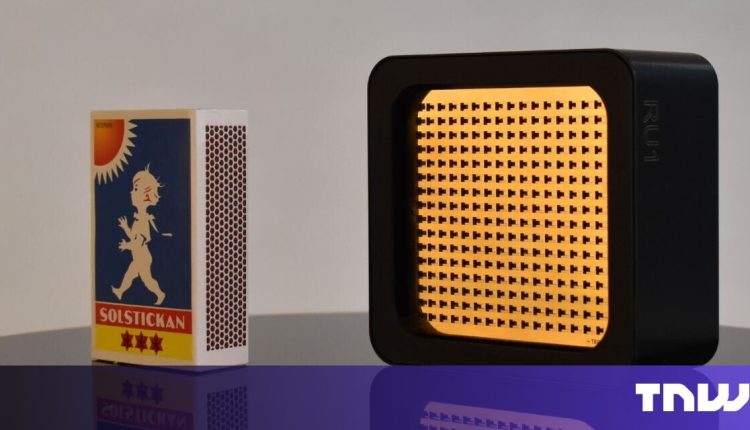A new Starlink alternative in pocket size promises safe military communication safe before interference by billionaire.
The system called RU1 was now unveiled by the Swedish startup Terasi. It is invoiced as the smallest and brightest MM-Wave radio in the world, a form of communication that offers flaming speeds and huge bandwidth.
James Campion, the CEO and co-founder of Terasi, describes the portable device as “The GoPro from Backhaul-Radios”.
“RU1 can be used in minutes to connect the units to a quick -changing environments,” Campion told TNW. The devices that he continued can be installed on tripods or drones. Several RU1S can then be associated with a resilient network to provide a bandwidth for mission-critical applications such as live drone video, autonomous fleet control and sensor data fusion.

The 💜 the EU technology
The latest rumors from the EU -Tech scene, a story of our wise old founder Boris and some questionable KI art. It is free of charge every week in your inbox. Register now!
It cannot be deactivated or controlled by external actors from a distance – a protection that is particularly lacking in SpaceX’s Starlink. This vulnerability was strikingly exposed in Ukraine.
Military control conflicts
Just a few days after Russia’s full invasion of February 2022, Elon Musk, the CEO of SpaceX, agreed to supply Ukraine with Starlink. The satellite internet service quickly became indispensable and, despite the tireless Russian attacks, kept Ukrainian military and civil systems online. However, it was also restricted at crucial moments.
In autumn 2022, Musk ordered the cover during a Ukrainian counter -offensive in Kherson. The step disturbed monitoring drones, artillery stargeting and troop coordination according to information A Reuters examination.
Later this year Musk declined to activate Starlink near the Crimea for a Naval drone strike. He was too supposedly asked by Vladimir Putin to limit the reporting on Taiwan – as a favor for XI Jinping.
These episodes underlined the dangers of a private operator who maintained control of military communication. According to Terasi, the RU1 removes this risk.
“The RU1 gives users complete control over their communication by creating a safe high -speed network that they own and operate themselves, without contributions from providers from third -party providers such as Starlink, which can be switched off or from a distance, as the incident of 2022 in Ukraine showed too clearly,” said Campion.
Battlefield performance
Terasi, a spinout of the KTH Royal Institute of Technology from Stockholm, also distinguishes the RU1 from Starlink in performance. The device uses highly focused antennas with very narrow, “laser -like” rays that are extremely difficult to die or intercept. The rays reduce the interception risk by producing small ground footprints of less than 3 km.
In contrast, Starlink covers areas of around 1,000 km with radio waves with a lower frequency, which argues Campion, “much more intercepted”.
In terms of performance, Terasi claims that RU1 supports data rates of up to 10 Gbit / s – 50 – faster than Starlink. Future versions promise 20 Gbit / s and offer a real wireless alternative to fiber.
According to Campion, the latency is less than 5 milliseconds, which is more than five times faster than Starlink. “This is crucial for the quick reaction in dynamic scenarios such as drone detection,” he said.
The technology is not just for military operations. Terasi imagines that it offers uninterrupted high -speed communication in various enemy or remote environments that have to deal with the traditional infrastructure.
With disaster aid, it could immediately restore gigabit links for first aiders without waiting for satellites or fiber repairs. In industry, it can enable temporary networks with a high capacity for long-distance construction, mining or energy locations.
For military, the RU1 is already available from defense units for evaluation. Terasi said it was currently integrated in systems with tactical communication providers and drone manufacturers.
Campion believes that the device offers different strengths than Starlink.
“Satellite communication services such as Starlink offer a comprehensive area coverage that is useful to connect static, low data rate sensors and devices to a global network,” he said.
“RU1 gives users control over their data and freedom to create sovereign networks on the fly and to change the paradigm on the front to wait for the infrastructure in order to make it immediately, depending on external actors to self -care composition.”
Even if it does not match the global scale of Starlink, the mixture of speed, security, simplicity and sovereignty of the RU1 could prove to be convincing – especially if a single CEO can lower the alternative at will.


Comments are closed.